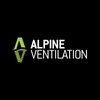Installing a rangehood vent kit is a critical step in maintaining air quality in your kitchen and preventing the buildup of grease and odors. Whether you're renovating your kitchen or upgrading your ventilation system, here are five key factors to consider for a successful installation.
-
Ventilation Type: The first decision to make is the type of ventilation system you need. There are two primary options: ducted (vented) and ductless (recirculating). Ducted systems expel air outside, while ductless systems filter and recirculate it back into the kitchen. Ducted systems are generally more effective at removing smoke and odors, but they require access to an exterior wall or roof for venting. Ductless systems are more flexible in terms of installation but may not be as efficient.
-
Location: Choosing the right location for your rangehood is crucial. It should be positioned directly above your cooktop to effectively capture and remove cooking byproducts. Ensure that there are no obstructions, and the hood is installed at the proper height (typically 24-30 inches above the cooktop surface).
-
Size and Power: Select a rangehood that matches the size and cooking capacity of your stove. Measure the width of your cooktop and choose a rangehood that covers it adequately. Additionally, consider the power (measured in cubic feet per minute, CFM) of the fan motor. A higher CFM rating is suitable for larger and more powerful stoves.
-
Venting Route: If you opt for a ducted system, plan the venting route carefully. The duct should have a straight, unobstructed path to the outside, with minimal bends or turns. Use the appropriate materials, such as rigid metal ducts, to ensure efficient airflow.
-
Installation and Professional Help: While some homeowners may tackle rangehood installation as a DIY project, it's often best to consult a professional. Proper installation is critical for the rangehood's performance and safety. A professional installer can ensure that the venting system is correctly set up and that the rangehood is securely mounted.
In conclusion, installing a rangehood vent kit requires careful consideration of ventilation type, location, size, power, venting route, and the option for professional help. By taking these factors into account, you can enjoy an efficiently ventilated kitchen, free from smoke, odors, and excess heat, while also ensuring your safety and peace of mind.


No comments yet